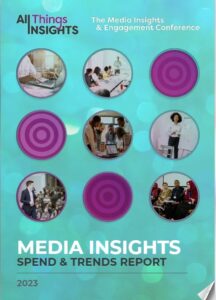The Pros & Cons of Focus Groups
There are advantages and disadvantages to each research method, but generally a focus group is a little more interactive, and under the guidance of a trained moderator. “This is a great way to hear firsthand feedback from actual users and potential customers. Those who know how to run a focus group will build enough flexibility into the process to be able to make changes on the fly, or dive deeper into a particular topic that may come up during the conversation,” observes Survey Monkey, in its blog, “When to use focus groups in your market research.”
Surveys, meanwhile, also offer a lot of flexibility in terms of questions and measurements. This can often be sent and presented to a larger number of people. Questionnaires, however, can be a one-way format, while focus groups offer perhaps a deeper conversation about the topics at hand, such as user research. There may be directional information in a focus group that points to a strategy the company can deploy in the future, while surveys might have more of a statistical proof of a concept, service or product.
As Survey Monkey notes, “As a rule of thumb, if you want to have a conversation with your customers that will help provide direction, pursue a focus group. If, however, you have well-defined questions and need to reach a large group or multiple groups of customers, a survey may better suit your needs.”
Of course, the combination of the two methodologies might provide a powerful range of insights, giving both inspiration and factual validation. Survey Monkey further looked at some of the pros and cons of focus groups, which we provide here:
Focus Groups – Pros
- Hear feedback in your customers’ own words and voices, the most personal kind of customer review you can get.
- Uncover ideas and issues that your team may not have considered but are important to your customer.
- Enjoy the flexibility of diving deeper into issues that come up during the discussion.
Focus Groups – Cons
- Expenses include recruitment and compensation of participants, facility rental, moderator and/or agency fees, and sometimes travel to multiple locations to get perspectives from different demographics.
- There’s a risk of receiving skewed results when outspoken participants dominate the discussion.
- Recruiting qualified participants may be hard due to the time commitment involved.
- You need to invest significant time and effort to organize and conduct a focus group.
Searching for Survey Satisfaction
Surveys, of course, also have a key place in market research and we looked more at the topic in All Things Insights’ “Improving the Customer Feedback Experience.” As the buyer journey becomes more complex, in this e-commerce and omnichannel-driven retail world, the customer satisfaction survey remains a foundational tool for the market researcher. With it, companies can measure consumer and brand sentiment and other measurements. This isn’t just about bringing in new customers, but about retaining your older customers and making sure they are satisfied with their products or services. It’s a rather quick and convenient way to ask customers for their feedback, identify technical issues, and discover new opportunities. In addition, it helps maintain relevancy and a competitive edge while monitoring, and improving, progress and operations over time.
All Things Insights’ Seth Adler recently connected with Bill Trovinger, Consumer Insights Dir., Pharmacy & Health, Albertson’s Companies, in “Zeroing in on DIY Research.” Adler and Trovinger, who presented a session at TMRE @ Home on the DIY insights function, discuss a range of topics, from the pandemic consumer to do-it-yourself insights initiatives and focus groups.
Organizing the Focus Group
Focus groups are a valuable qualitative research method used in the insights field to gather in-depth insights and understanding from participants about a particular topic or issue. Derived from ChatGPT, here are some top best practices for conducting focus groups effectively:
- Define Clear Objectives: Clearly define the objectives and research questions of the focus group session. Determine what specific insights you hope to gain and how they will contribute to your overall research goals.
- Select Diverse Participants: Choose participants who represent the target audience or stakeholders relevant to the research topic. Ensure diversity in demographics, backgrounds, perspectives, and experiences to capture a range of viewpoints and insights.
- Moderator Expertise: Select a skilled and impartial moderator to facilitate the focus group discussion. The moderator should be able to guide the conversation, keep participants engaged, probe for deeper insights, and manage group dynamics effectively.
- Create a Welcoming Environment: Set the stage for open and honest discussion by creating a comfortable and welcoming environment for participants. Choose a neutral and accessible location, provide refreshments if appropriate, and establish ground rules for respectful interaction.
- Use Structured Discussion Guides: Develop a structured discussion guide outlining key topics, questions, and prompts to guide the conversation. Balance between open-ended questions to encourage exploration and probing questions to delve deeper into specific areas of interest.
- Encourage Participation: Foster a collaborative atmosphere where all participants feel comfortable sharing their thoughts and opinions. Encourage active participation, listen attentively to each participant, and ensure everyone has an opportunity to contribute.
- Manage Group Dynamics: Be mindful of group dynamics and interpersonal relationships that may influence the discussion. Manage dominant participants, encourage quieter individuals to speak up, and maintain a balanced conversation flow.
- Capture Rich Data: Use audio or video recording equipment to capture the focus group discussion accurately. Take detailed notes to supplement recordings and capture non-verbal cues, emotions, and group dynamics.
- Analyze and Interpret Findings: Analyze the data collected from focus groups to identify key themes, patterns, and insights. Look for commonalities and differences among participants’ perspectives and explore the underlying reasons behind their responses.
- Report and Share Insights: Summarize the findings from the focus group sessions in a comprehensive report, presentation, or other format suitable for stakeholders. Share actionable insights and recommendations based on the research findings to inform decision-making and strategy development.
Finding a Purpose for Both Surveys and Focus Groups
By following these best practices, organizations can conduct focus groups that yield valuable insights and contribute to a deeper understanding of their target audience, market dynamics, and business challenges. Ultimately, the combination of both surveys and focus groups can enlighten, inspire and measure the best of both research worlds.
As Survey Monkey notes, “You know well that nothing is black and white in the world of market research and consumer feedback. So the question of whether to use a focus group or a survey, in many cases, is better understood as a choice of how to use them and when each of them can serve your purposes.”
Video courtesy of Spiel Creative
Contributor
-

Matthew Kramer is the Digital Editor for All Things Insights & All Things Innovation. He has over 20 years of experience working in publishing and media companies, on a variety of business-to-business publications, websites and trade shows.
View all posts


























































































